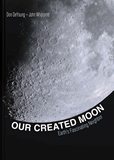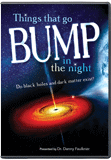
Super-colliders Looking for Dark Matter in All the Wrong Places
Super-colliders looking for dark matter may be on a wild goose chase.
News Source
Current big bang cosmology may be in for an overhaul, of sorts, suggests cosmologist Carlos Frenk. Speaking at the British Science Festival, Frenk revealed that the Virgo Consortium’s computer simulations of the formation of dwarf galaxies don’t match up with observable facts. Dwarf galaxies are dim galaxies arranged in a spheroidal halo around the Milky Way.
Big bang cosmologists believe that the universe is made of only about 4% ordinary matter and 21% dark matter, with the remainder being dark energy. This hypothetical dark matter and dark energy are necessary to explain observations about the gravity that holds the universe together and the expansion of the universe, as well as the distribution of galaxies in the wake of the supposed big bang. Dwarf galaxies are supposedly composed of mostly dark matter.
When Frenk’s group simulated the formation of dwarf galaxies within the big bang model, they found that a large number of small dwarf galaxies should exist.
When Frenk’s group simulated the formation of dwarf galaxies within the big bang model, they found that a large number of small dwarf galaxies should exist. However, observations show that in reality only a few larger dwarf galaxies exist. Frenk speculates that supernovae in the early universe may have played a role in reshaping the distribution of the dwarf galaxies, which might explain the discrepancy. But it is difficult to imagine how supernovae could so drastically affect something as weakly interactive as dark matter. Alternatively, the standard big bang cosmological model needs an adjustment. And if that adjustment gets made, the Large Hadron Collider and other facilities trying to find the dark matter particles like those supposedly produced within the first millionth of a second after the big bang are wasting their time.
Frenk says the problem is cold dark matter (CDM). Lower energy, slow moving CDM was supposedly produced in the first millionth of a second after the big bang. The assumption that the dark matter holding the universe together is CDM produces the wrong result in Frenk’s simulation. Lighter faster warm dark matter (WDM) could have presumably only been produced a few seconds after the big bang. If WDM instead of CDM is used in Frenk’s simulation, then his simulated distribution of dwarf galaxies is much closer to reality. Frenk says the WDM solution to the problem is “remarkably elegant” and that “the standard model is by no means dead.” Of course, neither CDM nor WDM has ever been directly observed.
The James Webb Space Telescope, a 2018 mission to look at “the earliest stars,” could “prove” which idea is correct if it peers back into deepest time and is unable to detect evidence of cold dark matter, leaving WDM as the default glue holding the universe together. Of course, if such missions are not really looking back in time but only far out in space—as we maintain—then all they’re doing is showing us what things look like, not how or when they formed.
The ability to simulate an occurrence in a laboratory does not prove it did—or could—occur spontaneously in nature.
In fact, the Hadron Collider—even if it does simulate conditions some cosmologists believe existed at the time of the big bang and even if it were to find elementary particles like those supposedly produced by the big bang—would not be proving that the big bang happened. The ability to simulate an occurrence in a laboratory does not prove it did—or could—occur spontaneously in nature.
Likewise, the discovery of dark matter particles (of any kind) might tell us something about the present nature of the universe, but it would not prove the big bang actually happened. Neither does the fact that WDM makes Frenk’s computer simulation come up with the sort of dwarf galaxies. The ability to simulate an occurrence on a computer also does not prove it did—or could—occur spontaneously in nature. It is also worth noting that Frenk’s simulations are all based on the unwarranted assumption that galaxy distributions are the result of natural forces (particularly gravity) acting over billions of years.
The big bang idea is an attempt to explain the origin of the universe in a naturalistic fashion—without invoking God. Sadly, many Christians compromise by trying to add the billions of years from the big bang to the Bible.
From the Bible, we can already know the big bang idea is wrong. The Word of God in Genesis 1 says the earth was created before the stars; the big bang view is the very opposite. In addition, the Bible teaches the earth was created as a paradise; the big bang model teaches it was first a hot, molten blob. The big bang and the Bible are entirely incompatible.
Further Reading
For More Information: Get Answers
Remember, if you see a news story that might merit some attention, let us know about it! (Note: if the story originates from the Associated Press, FOX News, MSNBC, the New York Times, or another major national media outlet, we will most likely have already heard about it.) And thanks to all of our readers who have submitted great news tips to us. If you didn’t catch all the latest News to Know, why not take a look to see what you’ve missed?
(Please note that links will take you directly to the source. Answers in Genesis is not responsible for content on the websites to which we refer. For more information, please see our Privacy Policy.)
Recommended Resources

Answers in Genesis is an apologetics ministry, dedicated to helping Christians defend their faith and proclaim the good news of Jesus Christ.
- Customer Service 800.778.3390
- © 2024 Answers in Genesis







